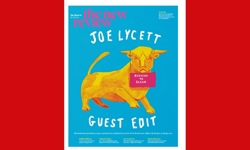In the March / April 2006 issue of InCirculation (Adwords and the Rules of Attraction), I wrote about building an email list using Google Adwords. This time, I’m going to write about what to do with your leads once you’ve got them. Email lists age quickly and the email marketer has to fight a ceaseless battle against boredom, indifference and irritation. It’s just like a marriage, but with the added problem of spam filters. Actually, it’s most like a Hollywood marriage, with the road from the altar to the divorce court often shorter than Liz Taylor’s attention span.
So, how do you keep the magic alive? How do you keep your email leads happy, and stop them divorcing you by pressing the dreaded unsubscribe button – or even worse, ignoring you completely and hoping passively that you’ll quietly go away? And, if you know it’s all going to go bad in the end (because, let’s face it, it probably will; opening rates will drop and response will flicker and fade), how can you get the maximum value from your lead while their interest is at its peak? The answer is in the mix.
The honeymoon period
Here’s your brand new lead, all fresh and keen and excited about being on your list, looking forward to you fulfilling all those promises about free information and useful tips. This is the time to be aggressive. The first email you ever send will be the most opened. Your aim is to convert your lead to a paying customer, and during the first month or so, you should send them all your best stuff. Don’t hold back. Send them the best marketing pieces you have, selling your most popular, relevant products. Vary the copy so they don’t get bored immediately, and mix in some editorial with the marketing.
Get the balance right
The first mix you have to think about is the ed-ad mix: how much editorial vs advertising, or marketing, you should send. You have to fulfil your promises to deliver useful information, because this is what will keep them interested and wanting to read your messages. The mix depends, to a degree, on the nature of your market. If you’re in a fast-moving world, a daily news or opinion based email should work. The Daily Reckoning (www.dailyreckoning.com) is a good example of this, as is Sport Business’s Newslines email (www.sportbusiness.com). If your leads are not looking for such intensive information, then a weekly editorial email will do the trick, like our own Sports Performance Bulletin (www.pponline.co.uk).
Keep the marketing light, but don’t forget it. For example, you can use extracts from the latest articles in your publications and say, ‘To read more like this…’ And you can also sell third party advertising in these emails as long as they don’t annoy, or distract the readers from your central message, which is ‘We’ve got what you want, and this is it.’
As long as you fulfil that promise to deliver information, you can send as many pure marketing emails as you like – you’ll need to test frequency to see how much your list can tolerate. In general, consumer lists are more tolerant than B2B lists where the universe is smaller.
Familiarity breeds contempt
Once our leads have been through the honeymoon stage and received our best marketing during the first few weeks, they go into a big pot where they get everything that everyone else gets. It’s not that we don’t think they’re special anymore – in fact, we send them more fresh editorial at this stage because we have to try a bit harder to make their hearts beat faster when they see us. This is when the marketing mix becomes most important.
Some email marketers concentrate on one product. For example, www.losethebackpain.com will send frequent emails about their back pain DVD. The alternative is to promote a variety of products, with the emphasis on the most popular, core publication. As we’ve added more products to our list, sales have gone up and up. Leads get bored of seeing the same old thing promoted over and over. This works well when your list is unified by a common interest.
However, the risk of sending everything to everyone is that your leads will feel like a lot of the information you’re sending them is irrelevant to them. One way round this is to collect demographic information (eg, what is your main sport) when they sign up and target them according to their interest, making sure they get regular, relevant information about it.
It’s possible – or rather, vital - to promote the same product but make it seem like something new, using varied copy. It almost goes without saying that good copy is vital, and you should use a number of copywriters. Every copywriter will find a new angle, bring out a different benefit and way of addressing your readers. Some lists will respond best to promotional copy, and others prefer information, and different copywriters can help you test this.
Love triangles
A great way of getting more from your list is to promote third party products – a rare case when a third person can enhance a relationship. You should join affiliate programs or do direct deals with other publishers (who will often reciprocate by promoting you to their list).
We know, through Adwords analysis, that there are lots of basketball players on our list, but we don’t yet have any basketball products. So, we found someone who publishes basketball information and made the basketball segment of our list – previously the least responsive – profitable by promoting their product and taking a cut. Make sure you add an endorsement – and, very important this, don’t endorse anything that you wouldn’t be happy to have produced yourself.
Time to experiment
One of the great challenges of email marketing is to keep your opening rates up. As time goes on, and your leads get older, the likelihood of them opening your emails, to read about your great offers, decreases. Boredom has set in. They’re so used to seeing you by now, that you need to introduce some spice into your relationship to arouse their interest.
Everybody knows the importance of a good subject line. But what about from lines: the name of the person or company that the email comes from? It’s a good idea to experiment with different from lines, so the email appears as if it’s from someone new. The message should come from the same email address as normal, and it should be clear when they open the email that this is not an unsolicited email (spam, in other words). Think of it as a dressing up game – it’s still you underneath, but the novelty piques your lead’s interest. Unfortunately, novelty always wears off, so you shouldn’t change your from line every time. We’ve found the best results (a rise in the opening rate of 25% on a single email) come if you occasionally use a different line, and it’s even better if the from line matches the copy and / or the product you’re selling. For example, you might send an email about solving back pain from ‘The Back Pain Doctor’.
Whetting the appetite
Another potentially rewarding method to try is a countdown offer. This is when you send a sequence of emails promoting a particular product, but not making the product available for sale until a certain date and time. You can start by announcing that there’s something very special coming, then unveil details over the coming days. At the end of each message, you tell them when the next message will appear… and, in the penultimate email, you announce the exact time when the offer begins. By the time the final email arrives, their appetite should be so whetted that they’ll be desperate to take you up on the offer.
The drawback of countdown offers is that you cannot send any other emails to the list during the countdown, or it spoils the effect. So, you won’t get any other email sales during this period, which should ideally run between 7 and 10 days. You should therefore send the offer initially to a test segment of your list and work out if the rewards make it worthwhile sending it to everyone.
The seven month itch
If you’re lucky, your leads will love you forever. They’ll want to open every message you send them because they value and cherish you so much. But, this is a numbers game, and although some people will stay loyal and keep getting their credit cards out forever, the majority will get less and less likely to convert as time goes by.
Don’t give up though. There are still ways to get value from the older parts of your list. The most obvious example is to send them cheap special offers that no one else sees. These work particularly well if you have a reason for the promotion – for example, an event like the start of the World Cup if you’re promoting a football product. You could also try an anniversary offer: "It’s been a year since you joined our list, and to celebrate, we’ve lined up a very special deal for you…" This can be done easily, using an autoresponder set to 365 days since they joined the list.
You should never stop promoting to the older leads, because they might have been sitting around waiting for you to come up with what they really want, and that new publication could be just the thing… And one final tip – don’t forget to send them flowers or gifts occasionally. An unexpected free gift, with no strings, can really boost your image.
| Golden Wedding Rules The golden rules for a happy, lasting relationship between you and your leads are: 1. Give them the most attention at the start. 2. Use variety to avoid things getting stale. 3. Don’t be afraid to invite third parties into your relationship. 4. Experiment. 5. Love them till the end. |










